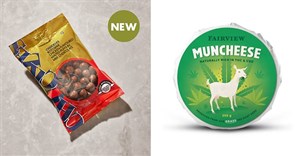
Amla and the sport reporting mistruths
It seems media consumers need to keep a critical mindset before falling hook, line and sinker for online stories reported as fact – long before the annual April Fool’s Day mistruths are published…
Just this weekend, headlines were hitting sixes with various media agencies reporting that Amla had refused to be interviewed by a female reporter in a low-necked top and skirt.
Now it turns out these claims are not true, with acclaimed sports journalist Antoinette Muller clarifying in The South African that there were many holes in this story, which first raised its head in Pakistan last year but was widely reported again as fact last week. It’s the stuff of urban legend.
Cricket South Africa has since issued a denial and Amla himself turned to Twitter to deny the published rumour, which led to many questioning the ethics of hard news reporting:
@amlahash @Sport24news
— Adriaan de la Rey (@Adriaan_delaRey) February 6, 2016
"We dont have a story"
"Well lets make 1 up?"
"We cant!No source!"
"Make it'various media'" pic.twitter.com/wMAghpX3If
No byline = no truth to the story?
Muller adds that Amla’s agent has requested that “untrue posts” such as those about his ‘fee for not wearing alcohol branding on his clothing’ are not shared. But that’s easier said than done.
How do you know you can trust a news source?
Apart from developing a cynical attitude and taking everything with a grain of salt, it helps to verify news across various platforms, – and not just on Twitter, where it takes a split second and the mere click of a button to retweet something, true or not.

The more sources are quoted and the more the varying articles out there on a specific topic differ in giving different angles or points of view, the better.
A byline also gives an article more credibility as it means someone is accountable for having cobbled the story together. But note that the byline should be a specific reporter’s name and not just ‘staff reporter’, as that usually means it’s a press release that’s been tweaked a bit to match the house style.
Even then, vague reporting littered with words like ‘allegedly’ and ‘might’ or ‘may have’, as in this overview of the Amla debacle, should set your ‘take it as gospel’ alarm bells ringing.
Then there’s newsjacking to watch out for: The practice of incorporating breaking news stories into your content just to make it more topical.
News reporters, hang your heads in shame. While many of us see ourselves and our work style as ethical, there are just so many ways for mistruths to be published, especially with tighter deadlines than ever, based on the ‘we must break the news before our competitors or else’ mindset.
Add that to the unfortunate trend of globally shrinking newsrooms, which mean less resources for fact-checking, and it’s a little easier to see how inaccuracies, rumours and urban legends get published as truth.
Let us know any other ‘questionable’ reporting habits you've noticed as well as tips to avoid getting caught up in the news rush in the comments section below, or connect with us on Twitter to keep the conversation flowing.

About Leigh Andrews
Leigh Andrews AKA the #MilkshakeQueen, is former Editor-in-Chief: Marketing & Media at Bizcommunity.com, with a passion for issues of diversity, inclusion and equality, and of course, gourmet food and drinks! She can be reached on Twitter at @Leigh_Andrews.



















